Rượu Cần: Basic Information
Pronunciation
Alternative Name(s)
Drink Type
Mealtime
Popular Rượu Cần Variations
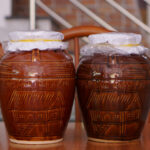
Rượu Cần Tây Bắc
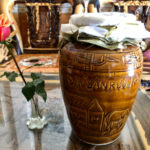
Rượu Cần Tây Nguyên
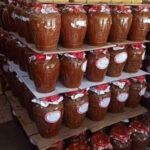
Thai-style Rượu Cần
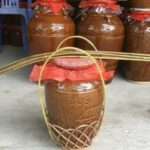
Muong-style Rượu Cần
Rượu Cần: Ingredients and Preparation
Main Ingredients
Main Preparing Method
Preparation Process
Rượu Cần: A Deep Dive
Cultural Significance
Taste
Texture
Aroma
Color
Serving Style
Serving Temperature
Accompaniment
Occasions
Calories
Popularity
Popular Similar Drinks
- Rượu Đế
- Lao-lao
- Tapuy
- Choujiu
Popular Dining Area
Rượu cần is a traditional Vietnamese fermented wine crafted from glutinous rice, rice, or other grains and many local herbs.
It’s fermented in earthenware jugs for at least a month and without distillation, resulting in an alcohol content of 15-25%.
What makes rượu cần distinctive from other wines in Vietnam is its unique way of consumption, in which people share the same jug to drink rượu cần through individual long bamboo straws.
Rượu cần is also a specialty wine of some ethnic groups living in Vietnam with various names, for example, Nơm Yăng in Mnông language, Tpei ché in Jarai language, Đ’rắp S’lung or Rơ nơm Đ’rắp in Stiêng language, or Tơ Nơm in K’ho language.
Overall, this is commonly consumed in Tay Nguyen (Central Highlands) and Tay Bac (Northwest) areas of the country.
In Montagnard tradition (indigenous groups in Vietnam’s Central Highlands), rượu cần is normally reserved for harvest celebrations, festivals, weddings, and hosting guests.
People enjoy it around a fire or in communal houses, often followed by dancing and music.
In the upcoming sections, you’ll comprehend the world of rượu cần, exploring its ingredients, crafting techniques, and diverse variations.
Additionally, I’ll address some positive sides and shortcomings, common inquiries about this fermented wine, and other similar beverage alternatives.
Key Points
What Are Ingredients and Tools To Make Rượu Cần?
The main ingredients for the wine are common grains like rice or glutinous rice, corn, cassava, millet, or seeds.
Another component is wine yeast made from forest leaves with essential oils, traditional medicinal herbs, ginger, galangal, etc.
For the tool, rượu cần is stored in a vessel called hũ, bình, chum, choé, or ché in Vietnam.
To drink it, bamboo straws are must-have items, which are prepared by fire-treating, straightening, hollowing, and bending.
In addition, tools like hollowed buffalo horns or pots are used for adding water to the wine containers.
After exploring the ingredients and tools used to make rượu cần, it leads us to discover its diverse variations.
What Are Variations of Rượu Cần?
With the information below, you can dive into the world of rượu cần variants and their interesting features.
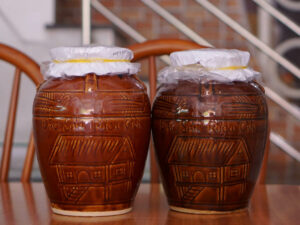
Rượu Cần Tây Bắc
A specialty of Hòa Bình and Sơn La in Northwestern Vietnam.Two types: Sweet yeast wine for women, with a sugary taste, and strong yeast wine for men, with a bitter, potent flavor.Comes in three jar sizes: small for couples, medium for groups of 4-8, and large for 10-14 people.Consumed from a jar using bamboo straws.Each jar has at least four flexible bamboo straws for drinking.
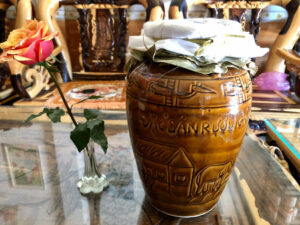
Rượu Cần Tây Nguyên
Popular in the Tay Nguyen area (the central highland of Vietnam).Made from corn, cassava, or regular rice, and glutinous riceProcess: Cook rice, mix with rice husk, dry, and ferment with leaf yeast from forest trees.Flavorful, refreshing, and considered healthy, stimulating digestion.Only one straw used, passed with hands always holding it, covering the tip.Rhade and M’nong people have a distinct drinking order, emphasizing respect and etiquette.Jars of rượu cần Tây Nguyên are decorated. Old ones are higher in value.
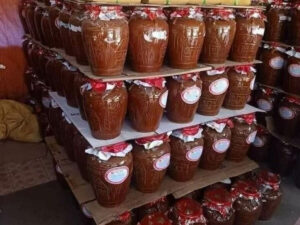
Thai-style Rượu Cần
The method is known as “láu xá.”Uses leaf yeast from forest plants and other components like galangal root, betel leaves, chili peppers, etc, then ground with broken rice.Ingredients are fermented in 15 to 20 days.Longer storage enhances the quality.
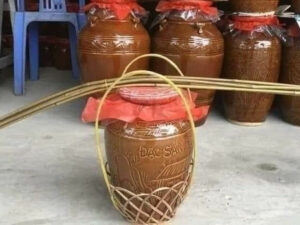
Muong-style Rượu Cần
Muong community calls drinking rượu cần “vít khoè” (twisting the wine straw).Stored underground for 100 days, served next to a copper bowl of clear spring water.Muong people use multiple straws, one for each person, to drink communallyDrinking stops only when the session leader signals, and leaving mid-way results in a penalty.
Continuing with the discussion, you’ll have a broader view of rượu cần through the overview of its advantages and disadvantages.
Pros and Cons of Drinking Rượu Cần
To make an informed choice regarding rượu cần, it’s a good idea to refer to the table below, which summarizes its benefits and drawbacks.
Pros
Cons
Next, you’ll explore the typical questions that are frequently raised about this traditional Vietnamese fermented wine.



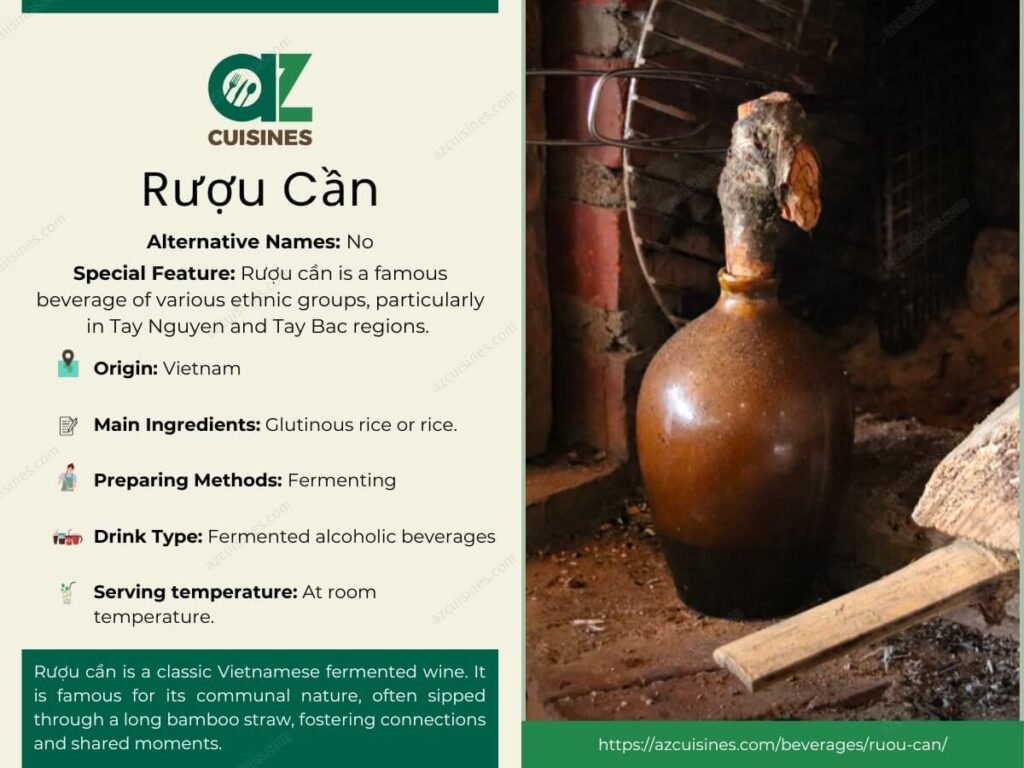
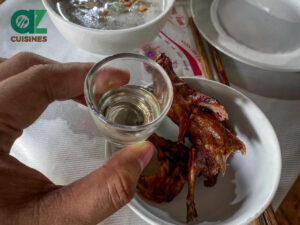
Adam Sam
Senior Food and Drink Editor
Expertise
Food Writer & Recipe Developer, Recipe Tester, Bartender, Cooking-video Maker, Editor In Chief
Education
Adam Sam, an experienced food writer and recipe developer, is passionate about blending diverse culinary traditions, national dishes, and innovative beverages, showcasing his proficiency in both traditional and modern recipe testing.
As the Editor-in-Chief, he elevates culinary content from street food to fine dining, focusing on Western cuisine and types of drinks at azcuisines.com, and is professional in creating engaging cooking videos that simplify complex dishes and ingredients.
His passion for food is evident in his writing, where he uniquely merges various cultures, traditions, and contemporary trends, skillfully combining classic recipes with modern cooking methods.